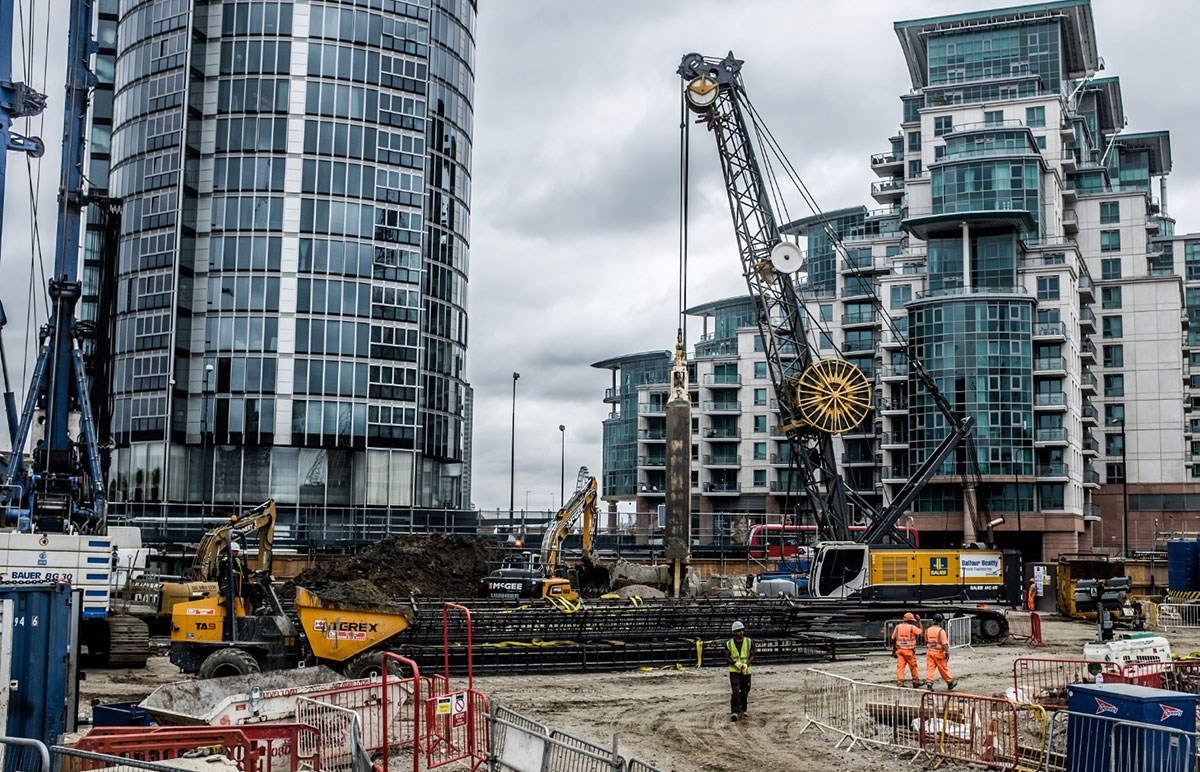The Best Strategy To Use For Geotheta
The Best Strategy To Use For Geotheta
Blog Article
The Of Geotheta
Table of ContentsThe Ultimate Guide To GeothetaGeotheta Fundamentals ExplainedHow Geotheta can Save You Time, Stress, and Money.The Best Strategy To Use For Geotheta
They work together with civil engineers, structural designers, architects, and various other experts to integrate geotechnical factors to consider right into the general project layout and building procedure. This calls for reliable synergy, sychronisation, and communication to ensure that the geotechnical facets straighten with the job objectives and satisfy regulatory needs.Mining & Materials Design: Concepts of drilling, infiltration prices, and elements influencing the choice of boring approach. Blowing up methods in surface and underground functions. Mechanical and continuous techniques to fragmentation, including longwall shearing and fullface boring.
Integrated evaluation of fragmentation and comminution procedures. Supplied by: Mining & Products Design.
The Buzz on Geotheta
Bachelor's level programs in civil, geotechnical, geological, and environmental engineering generally last four years and include basic education programs in English, social science, and the humanities, along with training courses in advanced mathematics, structural geology, and liquid mineralogy. (https://dc-state.cataloxy.us/firms/dc-anacostia/geotheta.com.htm)
Geotechnical engineering includes the analysis of the soil and rock conditions at a certain site, and their ramifications for the growth of that website. As the majority of frameworks count on the ground for support, it is without surprise that a detailed understanding of the ground problems, and the suitability of foundation systems, are important to the long-lasting stability and efficiency of the structure or framework.
Being experts in the investigation of geological developments and ground behaviour, geotechnical engineers do scientific examinations and screening to recognize the effect these geological formations may carry the design and construction of building, civil and framework jobs. This proficiency is essential for the layout and building of buildings, roadways, tunnels, dams, bridges, and water supply and sewage systems.
The geotechnical group at Douglas Partners regularly consult with engineers, style engineers, developers, and contractors to make suggestions on style and development proposals to ensure that the built structures are accordingly made for the ground conditions. As an example, the design of footing systems needs to take into consideration the weight of the framework, the ability of the ground to sustain that weight with each other with motion tolerances and reliable building and construction.
Not known Details About Geotheta
This task is substantially simplified by the usage of our Douglas Map geospatial platform that makes this information conveniently accessible in a very easy to utilize internet browser interface. A geotechnical engineer will guide the drilling of boreholes and test pits to gather dirt and other samples, and additionally evaluate surface area features and ground direct exposures to develop a geotechnical design of the subsurface conditions.
Depending upon the task kind and ground conditions came across, laboratory testing may to name a few points assess stamina, compressibility, sensitivity and/or leaks in the structure of dirt and rock samples. After this information is gathered and collected, the outcomes are made use of for a geotechnical model of the site, which is typically presented as sections across the site.

A geotechnical investigation by nature can just analyze the ground conditions at the places pierced or excavated. Natural variations in soil and rock conditions can occur across a website and between examination areas. It is therefore great method that the geotechnical engineer be preserved throughout building and construction of the task to give on-site confirmation that the ground problems encountered follow the assumptions and suggestions provided in the geotechnical examination record.
The Definitive Guide for Geotheta
Geotechnical engineers use their comprehensive expertise of soil and rock to analyze risk and solve troubles on diverse framework projectsGeotechnical engineering is a specialist branch of civil design which checks out the behaviour of planet materials and the application of dirt and rock auto mechanics. Tailings Engineer. As a geotechnical engineer, you will assess the physical, mechanical and chemical residential properties of dirt and rock in order to develop structures, maintaining frameworks and earthworks
Geotechnical engineering is very closely linked to and overlaps with, both design geology and ground engineering - https://issuu.com/geotheta. It's possible to be experts in geotechnics or job for a geotechnical business but be recognized as a design geologist or a ground designer. As a geotechnical engineer, you'll need to: build and keep partnerships with clients and other professionals associated with the website, throughout each projectmaintain safety criteria on site bear in mind expense implications when you make recommendationsstudy geological maps and airborne photographs from a variety of sources and from various time periodsexamine building intends to see exactly how viable they are based on your understanding of you can try these out the siteinvestigate threats or geological risks for the sitesearch for eco sensitive attributes, such as landfill start to develop valid and expository ground modelsplan field investigationsdrill and analyse samples of bedrock, soil, groundwater and added products oversee various other experts on sitesolve technological problems as they occur, such as unanticipated structures at drill sitesmonitor conditions during and after building to see to it structures are stable in the brief and lengthy termadding information gathered on website to your initial researchcreating geotechnical estimations, illustrations, and two or three-dimensional computer system models translating the datamaking recommendations concerning the suggested usage of the website

Report this page